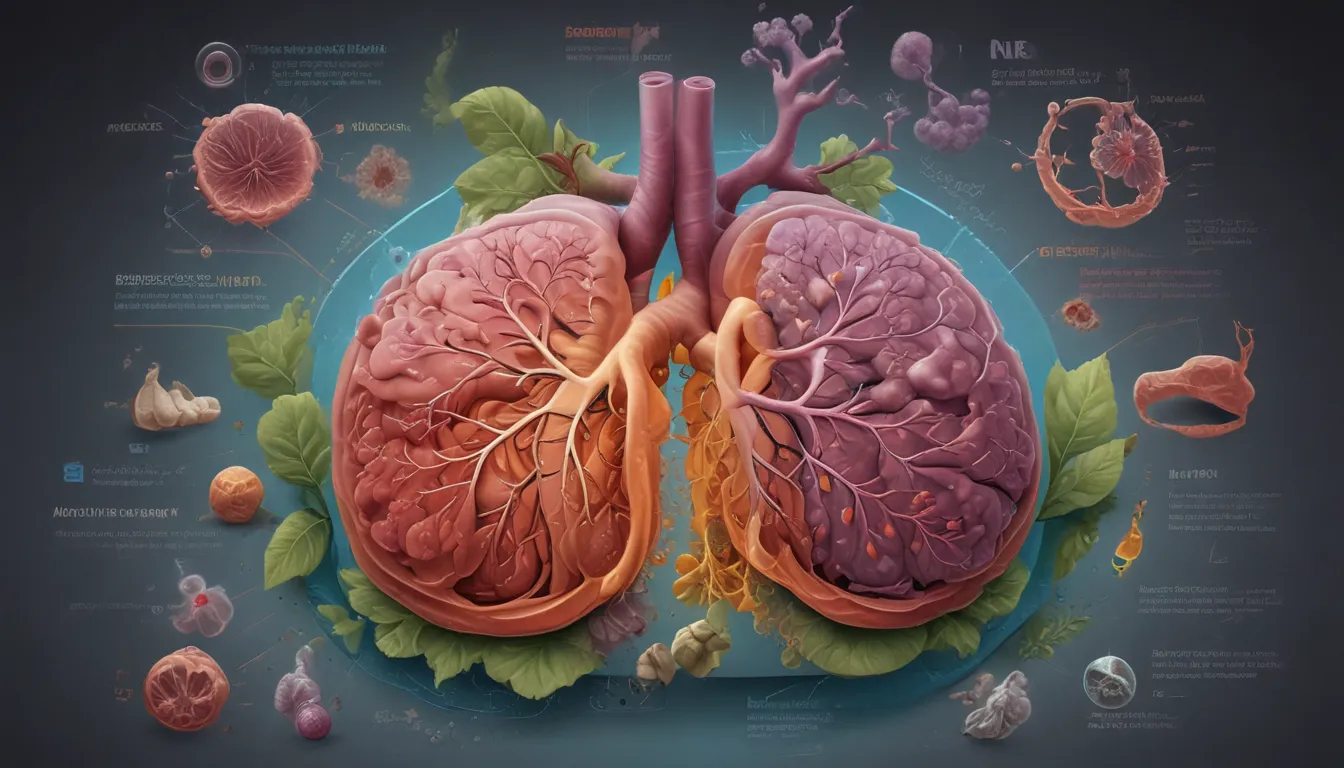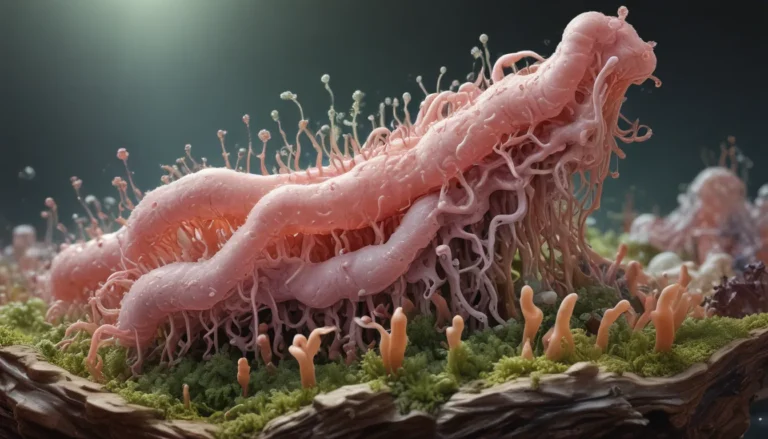A Note About Images: The images used in our articles are for illustration purposes only and may not exactly match the content. They are meant to engage readers, but the text should be relied upon for accurate information.
In the realm of biological processes, anaerobic respiration stands out as a fascinating phenomenon that offers intriguing insights into the adaptability and survival strategies of various organisms. This metabolic pathway, which operates in the absence of oxygen, plays a crucial role in energy production, industrial processes, environmental conservation, and more. Let’s embark on a journey to unravel the mysteries of anaerobic respiration by exploring its mechanisms, significance, and diverse applications.
Unveiling the Mysteries of Anaerobic Respiration
What exactly is anaerobic respiration, and how does it differ from its oxygen-dependent counterpart? Anaerobic respiration is a cellular process that occurs in environments where oxygen is scarce or unavailable. While aerobic respiration relies on oxygen for energy production, anaerobic respiration allows organisms to generate energy by breaking down glucose without the need for oxygen. This metabolic pathway serves as a vital survival mechanism for organisms thriving in oxygen-deprived conditions.
The Two Faces of Anaerobic Respiration: Alcoholic vs. Lactic Acid Fermentation
Anaerobic respiration manifests in two primary forms: alcoholic fermentation and lactic acid fermentation. In alcoholic fermentation, yeast cells convert sugars into ethanol and carbon dioxide, a process commonly employed in the production of alcoholic beverages like beer and wine. On the other hand, lactic acid fermentation helps generate energy in the absence of oxygen, leading to the buildup of lactic acid in muscles during intense physical activities. These diverse pathways showcase the adaptability and versatility of anaerobic respiration in different biological contexts.
Unleashing the Power of Anaerobic Respiration in Microorganisms
Microorganisms such as bacteria, yeast, and certain fungi have mastered the art of anaerobic respiration to thrive in oxygen-limiting environments. These resilient organisms showcase the evolutionary significance of anaerobic pathways, revealing how life adapts and perseveres under challenging conditions. By harnessing the energy-generating capabilities of anaerobic respiration, microorganisms play essential roles in various industrial processes, environmental cycles, and even our own digestive systems.
Energizing the World: Anaerobic Respiration in Energy Production
While aerobic respiration reigns supreme in energy yield, anaerobic respiration remains a valuable pathway for energy production. Generating approximately 5% to 10% of the energy produced in aerobic respiration, anaerobic pathways provide a backup plan for organisms when oxygen is in short supply. From biofuel production to biogas generation, the applications of anaerobic respiration in energy production are diverse, sustainable, and innovative.
Nurturing Nature: Anaerobic Respiration in Environmental Conservation
The ecological significance of anaerobic respiration cannot be understated. In oxygen-deprived environments such as wetlands and marine sediments, anaerobic organisms play a crucial role in decomposing organic matter and recycling nutrients. By breaking down complex compounds into simpler forms, anaerobic respiration contributes to nutrient cycling, ecosystem health, and ecological balance. This biological process highlights the interconnectedness of all living organisms and their roles in sustaining the planet’s ecosystems.
Enriching the Gut Microbiome: Anaerobic Bacteria as Digestive Allies
Within the intricate landscape of the human digestive system, anaerobic bacteria wield immense influence in breaking down complex carbohydrates and aiding in the fermentation process. These beneficial microbes contribute to digestive health, nutrient absorption, and overall well-being. By supporting the gut microbiome through the fermentation of dietary fibers, anaerobic bacteria play a pivotal role in maintaining a healthy digestive ecosystem.
Delving Deeper into Methanogenesis: The Methane Connection
One of the captivating outcomes of anaerobic respiration is methanogenesis, a process wherein certain archaea produce methane gas in anaerobic environments. From swamps and marshes to the intestines of ruminant animals, methanogenesis showcases the diverse habitats where anaerobic organisms thrive. This methane production pathway contributes to greenhouse gas emissions and plays a significant role in the carbon cycle, emphasizing the complex interactions between anaerobic respiration and environmental systems.
From Extremophiles to Carbon Cycles: Exploring the Diverse Applications of Anaerobic Respiration
In the extreme realms of deep-sea hydrothermal vents, hot springs, and frozen environments, extremophiles harness the power of anaerobic respiration to survive and thrive. These resilient organisms showcase the adaptability and resilience of life in harsh conditions, shedding light on the diverse ways in which anaerobic pathways shape biological evolution. Furthermore, anaerobic respiration’s involvement in the carbon cycle underscores its role in greenhouse gas production, climate change, and global environmental processes.
Illuminating Medical Diagnostics: Anaerobic Respiration in Infections
In the realm of medical diagnostics, anaerobic bacteria pose unique challenges due to their ability to cause infections in wounds, abscesses, and deep tissue injuries. Identifying and treating anaerobic infections require specialized laboratory techniques that involve culturing samples under anaerobic conditions. By understanding the role of anaerobic bacteria in infectious diseases, healthcare professionals can provide tailored treatments and improve patient outcomes.
Unlocking the Potential of Biogas Production: Sustainable Energy from Anaerobic Respiration
The decomposition of organic waste in anaerobic environments offers a sustainable solution for biogas production. By harnessing the methane and carbon dioxide emissions from anaerobic respiration, biogas facilities can generate renewable energy sources and reduce greenhouse gas emissions. This innovative approach to energy production highlights the synergies between anaerobic processes, environmental conservation, and sustainable practices.
Tracing the Evolutionary Footprints: Anaerobic Respiration’s Ancient Origins
Anaerobic respiration is believed to be an ancient metabolic pathway that predates the evolution of oxygen-dependent aerobic respiration. This primordial process played a pivotal role in sustaining life before atmospheric oxygen levels rose, shaping the course of biological evolution. By studying the evolutionary significance of anaerobic respiration, researchers gain valuable insights into the origins of cellular metabolism, biodiversity, and the diverse metabolic capabilities exhibited by living organisms.
The Road Ahead: Nurturing Curiosity and Discovery in Anaerobic Respiration
As we delve deeper into the enigmatic world of anaerobic respiration, we uncover a myriad of possibilities, applications, and mysteries waiting to be elucidated. From its role in energy production to its impact on global carbon cycles, anaerobic respiration continues to intrigue and inspire researchers, educators, and curious minds alike. By fostering a spirit of exploration, inquiry, and collaboration, we can unlock the full potential of anaerobic respiration and its profound implications for the world around us.
FAQs: Exploring Common Questions About Anaerobic Respiration
-
What is anaerobic respiration?
Anaerobic respiration is a biological process that allows organisms to generate energy in the absence of oxygen by breaking down organic molecules into usable energy sources. -
How does anaerobic respiration differ from aerobic respiration?
Anaerobic respiration does not require oxygen as the final electron acceptor, unlike aerobic respiration. Additionally, anaerobic respiration produces less energy compared to aerobic respiration. -
Which organisms use anaerobic respiration?
Various organisms, including bacteria, archaea, and certain fungi, utilize anaerobic respiration to produce energy in environments with limited oxygen availability. -
What is the role of anaerobic respiration in fermentation?
Anaerobic respiration plays a crucial role in the fermentation process by converting sugars into alcohol or acids, which is essential in the production of foods and beverages like bread, beer, wine, and yogurt. -
How does anaerobic respiration impact the environment?
Anaerobic respiration contributes to the decomposition of organic matter in oxygen-deprived environments, facilitating nutrient recycling and maintaining ecological balance in various ecosystems.
Embracing the Path of Discovery: Anaerobic Respiration’s Endless Wonders
As we navigate the intricate pathways of anaerobic respiration, we encounter a world brimming with diversity, resilience, and innovation. From the microbial realms of bacteria and yeast to the extreme habitats of extremophiles, anaerobic respiration showcases the remarkable adaptability of life in all its forms. By embracing curiosity, pursuing knowledge, and exploring the mysteries that lie before us, we take another step towards unraveling the secrets of anaerobic respiration and its profound impact on the biological world. Let us continue our journey of discovery with open minds and hearts, ready to embrace the wonders that await us in the realm of cellular respiration.






